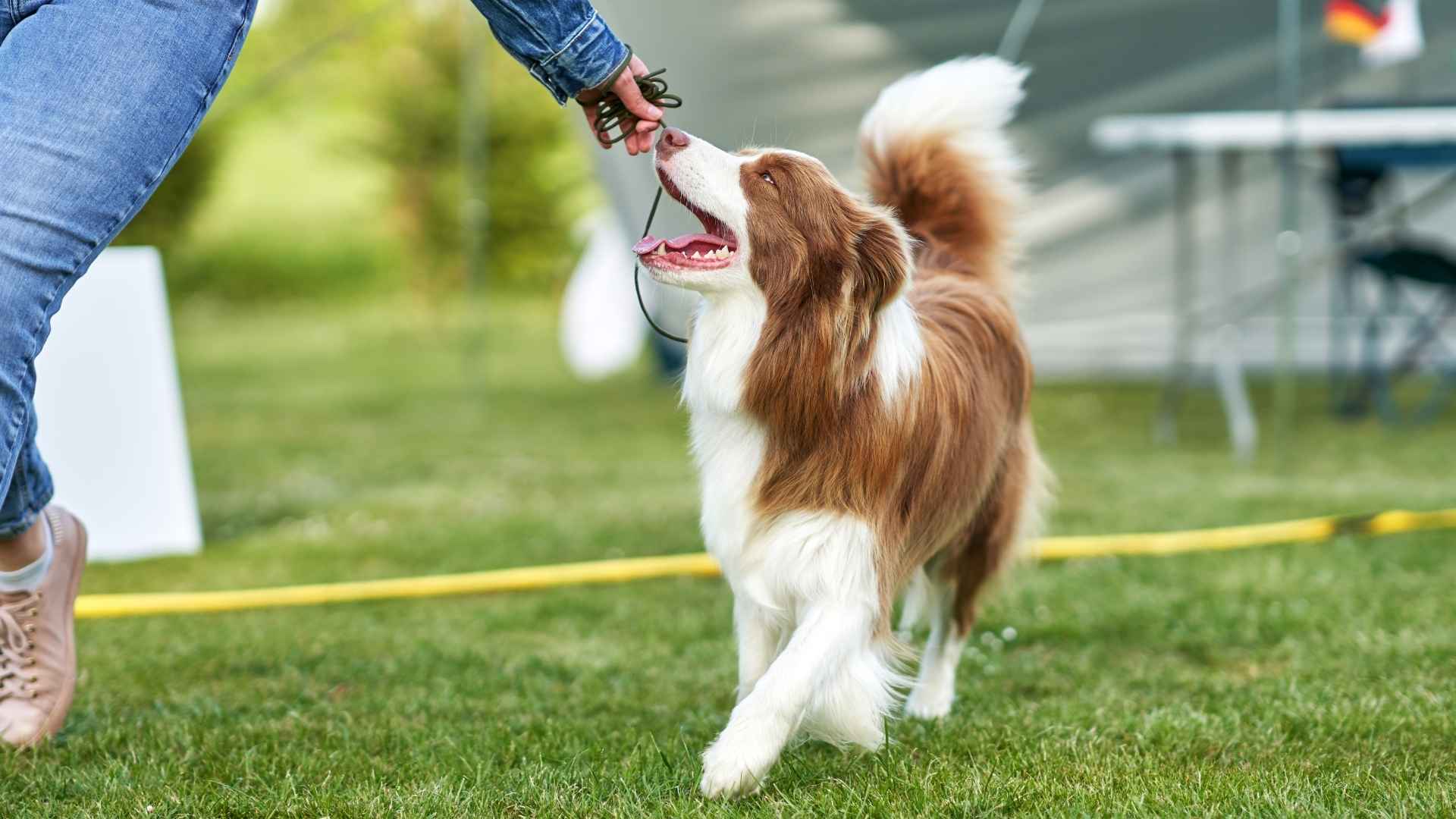Some dogs effortlessly roll over, play dead, and even fetch specific items by name, while other dogs struggle with basic commands despite months of training sessions. The striking difference often comes down to one factor: that is breed’s natural intelligence and eagerness to learn tricks.
Dogs can learn more than 100 words and gestures on average, and some can master tricks as many as 250 words. However, not all dog breeds approach learning with the same enthusiasm or capability. Some breeds have been specifically developed over centuries to work closely with humans to create dogs that excel at reading body language.
The smartest dogs don’t memorize tricks; they understand and figure out problems before they are taught the solution. These intelligent breeds make training feel effortless and turn it into an enjoyable adventure.
Dog Breeds That Master Tricks Fast
1. Border Collie
They dominate the dog world with their intelligence and popularity. Collies bred for herding work are suitable for intellectual tasks like word association, which requires the dog to work at a distance from humans. This way, you can understand how incredible they are at learning new tricks, as PetMD mentions.
This energetic breed originated in the border regions between England and Scotland, where farmers need dogs that are capable of managing a large flock of sheep across the terrain. Border Collie’s intense stare is perfect to control livestock, and it also helps in the training sessions.
2. Golden Retriever
Originally bred as hunting dogs in Scotland during the 1860s, these wonderful companions work closely with hunters and maintain a gentle nature around game birds. This breed absolutely loves mealtime and makes reward-based training effective. They rarely show frustration during training sessions, and they enjoy every bit of the process.
Their gentle nature and intelligence make them exceptional therapy dogs and service dogs. They excel at tricks that involve retrieving specific items.
Golden Retrievers also make lovely bonds with the family members, and they love to entertain the kids. Their thick and water repellent coat needs regular grooming, but you will enjoy it when you maintain their coat.
3. Labrador Retriever
They excel at creating joy during sessions because they approach every interaction with enthusiasm and boundless energy. One of the major reasons they are popular is their friendliness and lovely nature. Originally bred as fishing dogs in Newfoundland, these are excellent at trick training and water activities.
Their friendly nature helps them make friends easily, and the kids around them are a reason you feel safe. Labs have an understanding of human emotions, and they can learn about human needs to help them.
They excel at tasks that involve gentle mouth work, such as carrying objects and retrieving medications. These active dogs need daily exercise to prevent boredom. Their thick and weather-resistant coats need regular brushing, especially during shedding seasons. Labs normally live 10-12 years and maintain their playful energy. They were recognized by the American Kennel Club in 1917.
4. Papillon
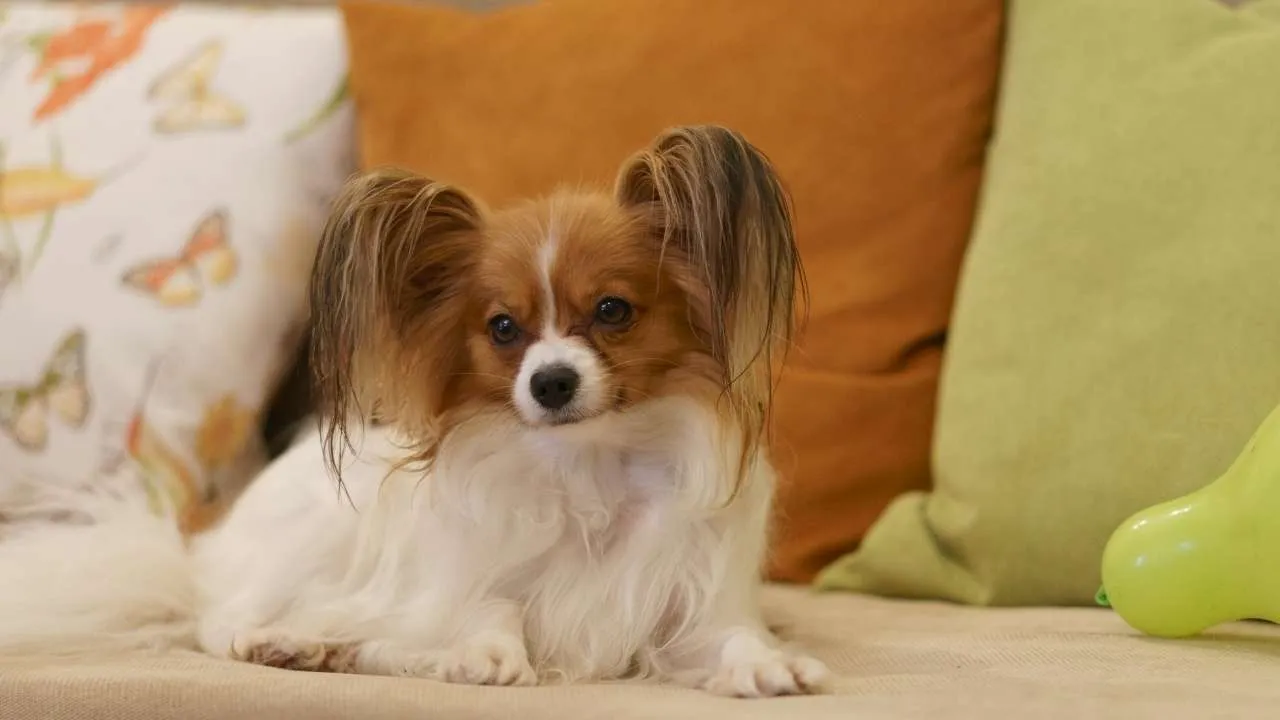
The name Papillon comes from the French word for butterfly, which perfectly describes the breed’s ear shape that resembles delicate wings. These tiny dogs weigh only 5-10 pounds but have intelligence that makes them rank among the intelligent. Their alert expression and lively personality make them natural performers who genuinely enjoy showing off new tricks.
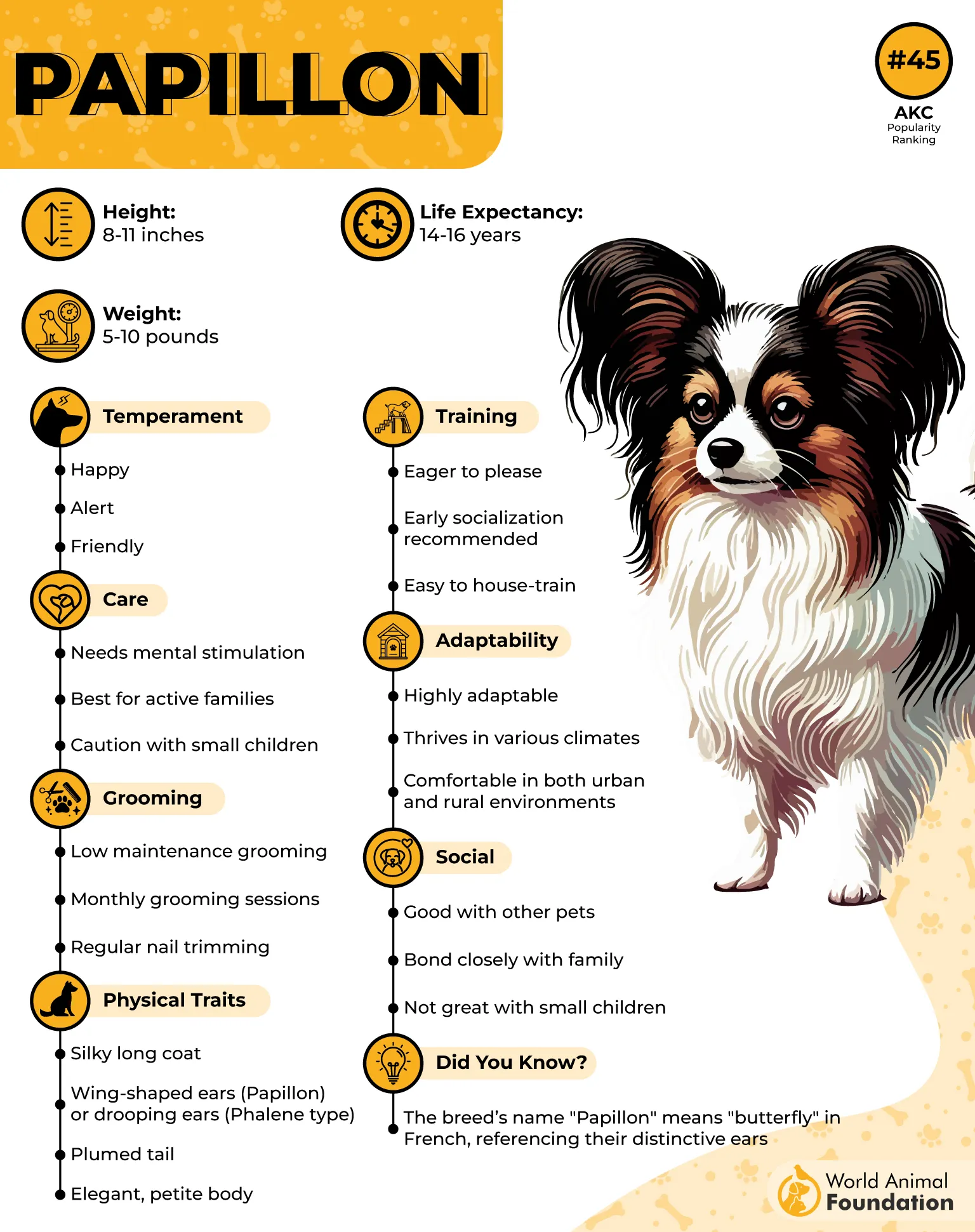
These are not just fragile dogs that you may think can’t do anything. They master complex commands and learn tricks easily. They also do best at agility courses designed for small dogs and can learn intricate sequences that combine jumping. They can learn tricks and be athletic in small apartments.
5. Cocker Spaniel
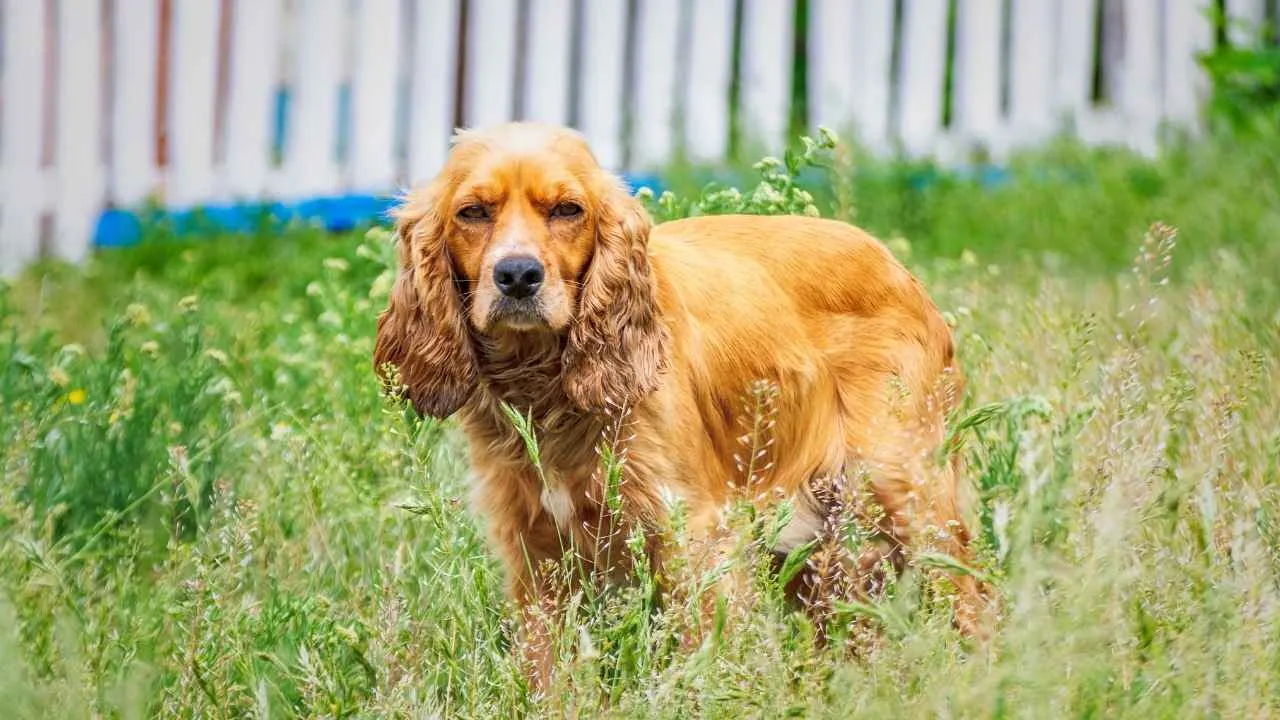
Cocker Spaniels have a temperament that makes training feel like a collaborative effort rather than a battle of wills. These medium-sized hunting dogs were originally bred to flush game birds from dense cover, which requires them to work independently while staying attuned to their handler’s directions. This heritage created dogs that balance independence with obedience beautifully.
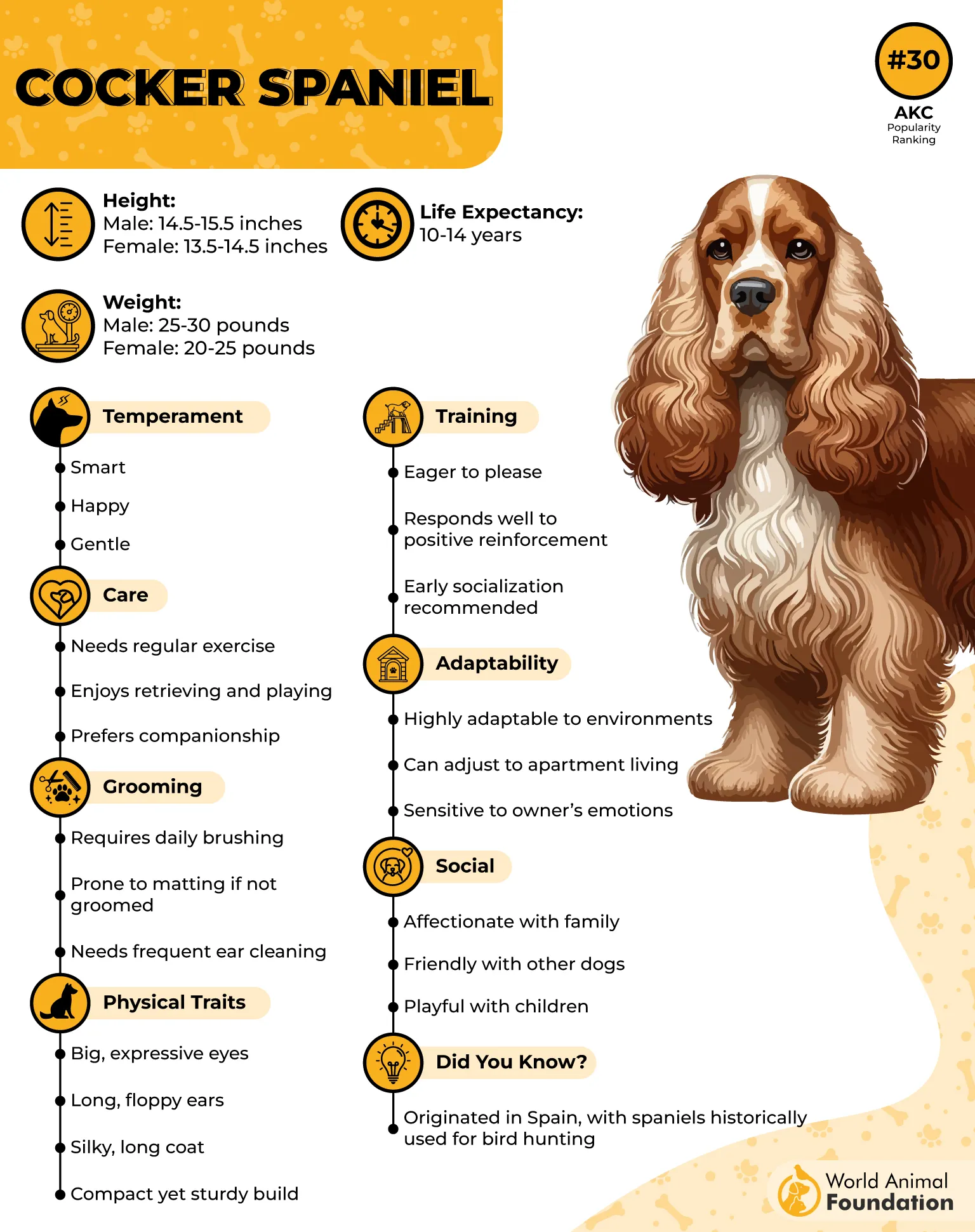
What makes Cocker Spaniels exceptional at learning tricks is their incredible food motivation combined with a genuine desire to make their families happy. They approach each training session with enthusiasm, especially when they know treats are involved.
However, these sensitive dogs can become discouraged by harsh corrections, responding much better to gentle guidance and patience during the learning process.
6. Miniature Schnauzer
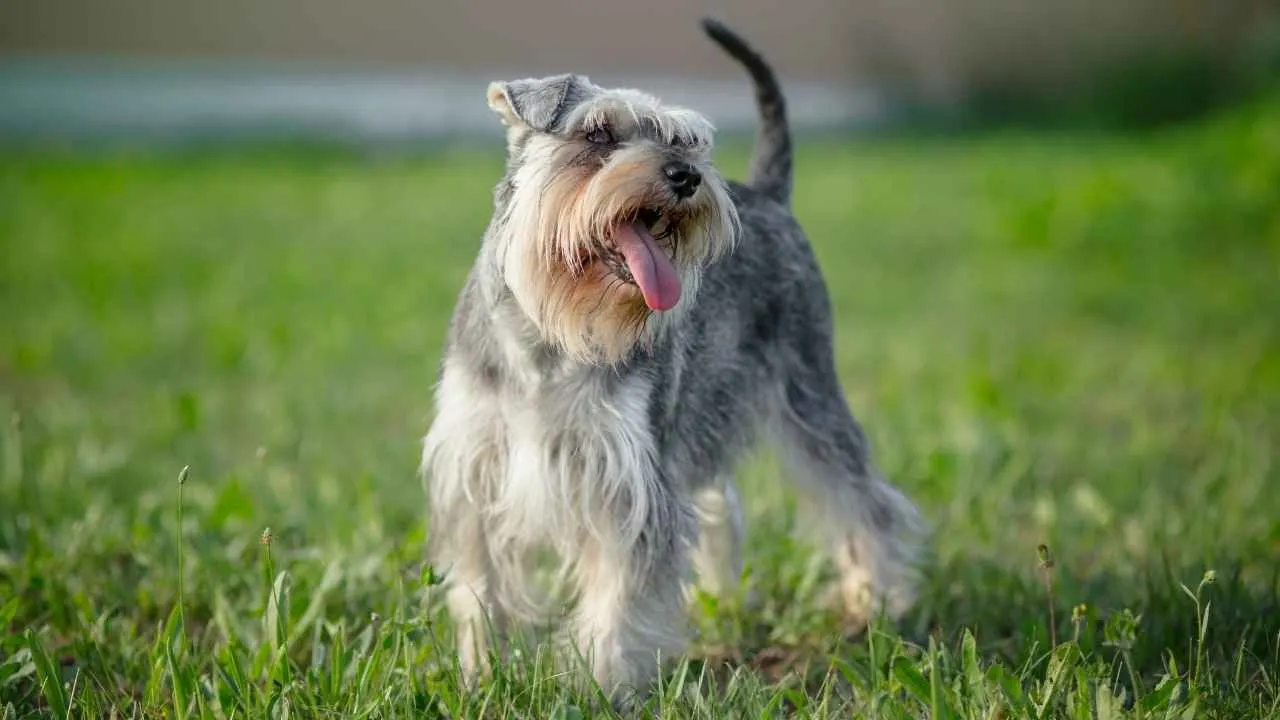
Miniature Schnauzers pack enormous personality into their compact 14-17-pound frames, as Purina mentions. They approach life with confidence that makes training both entertaining and challenging. These bearded terriers were developed in Germany during the late 1800s to control rats and small vermin around farms and homes. These are small dogs with sharp intelligence and determination.
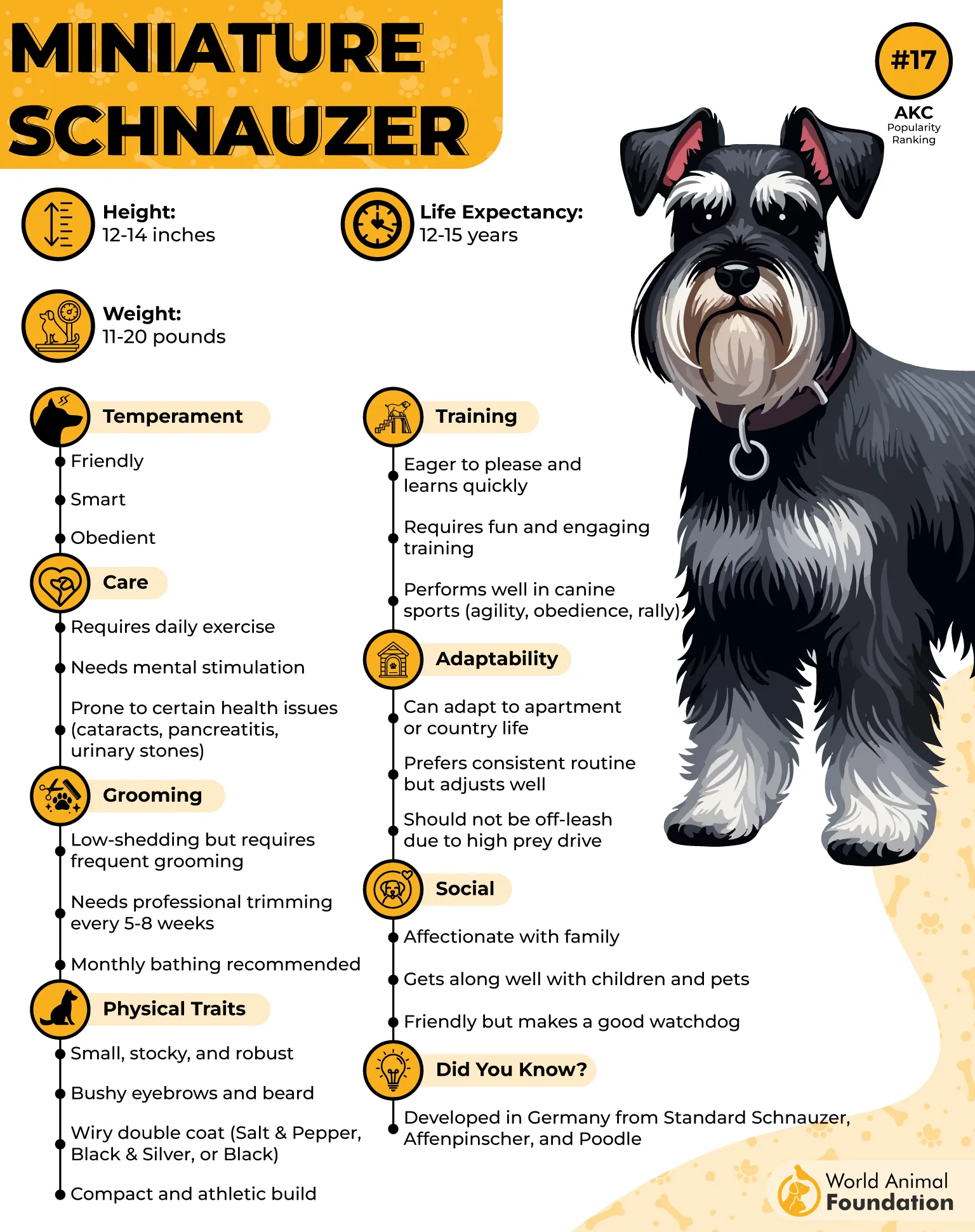
They have natural confidence, which can sometimes translate into stubbornness during training sessions, but their intelligence means they learn quickly once they understand what’s expected. Miniature Schnauzers respond exceptionally well to consistent training routines and clear expectations.
Their lifespan of 12-15 years gives families plenty of time to develop a strong training relationship and build an extensive trick repertoire together.
7. English Springer Spaniel
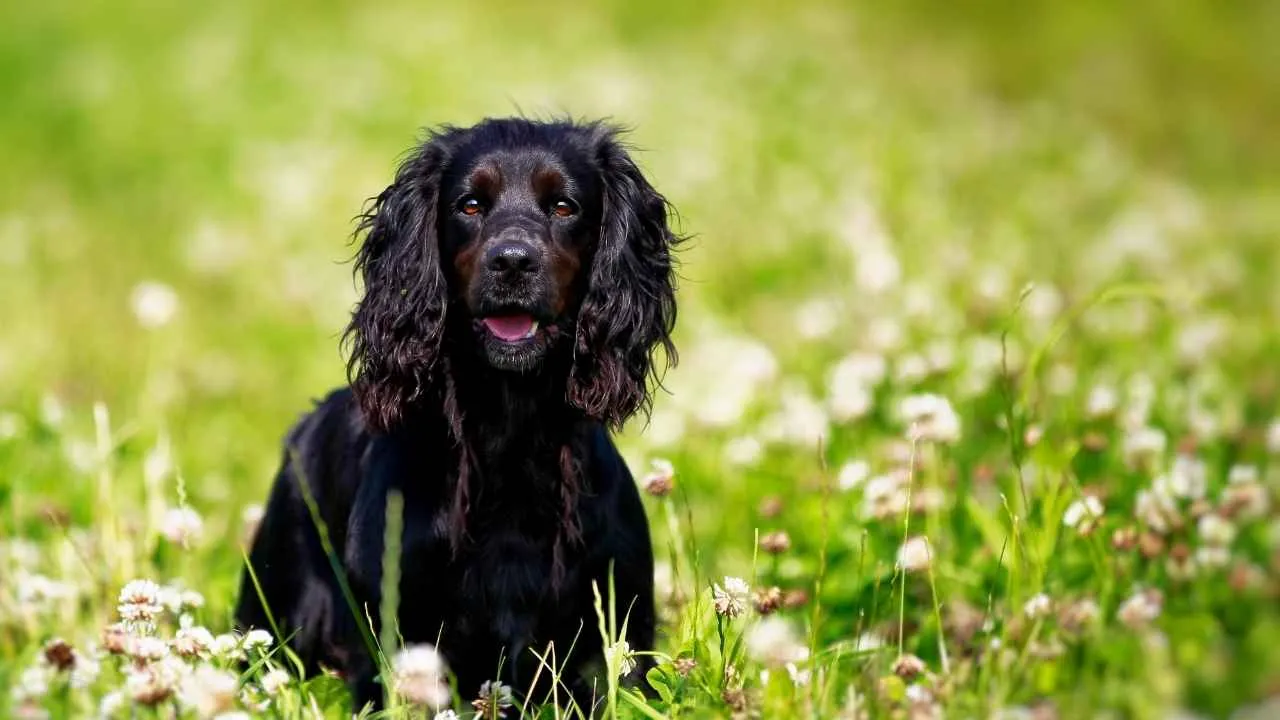
English Springer Spaniels approach training with boundless enthusiasm that can make sessions feel more like play dates than formal instruction. These medium-sized hunting dogs were developed to spring game birds from cover.
They require them to work at varying distances from their handlers while maintaining communication and focus. This working background created dogs with exceptional intelligence and natural eagerness to collaborate, and they are affectionate with humans.
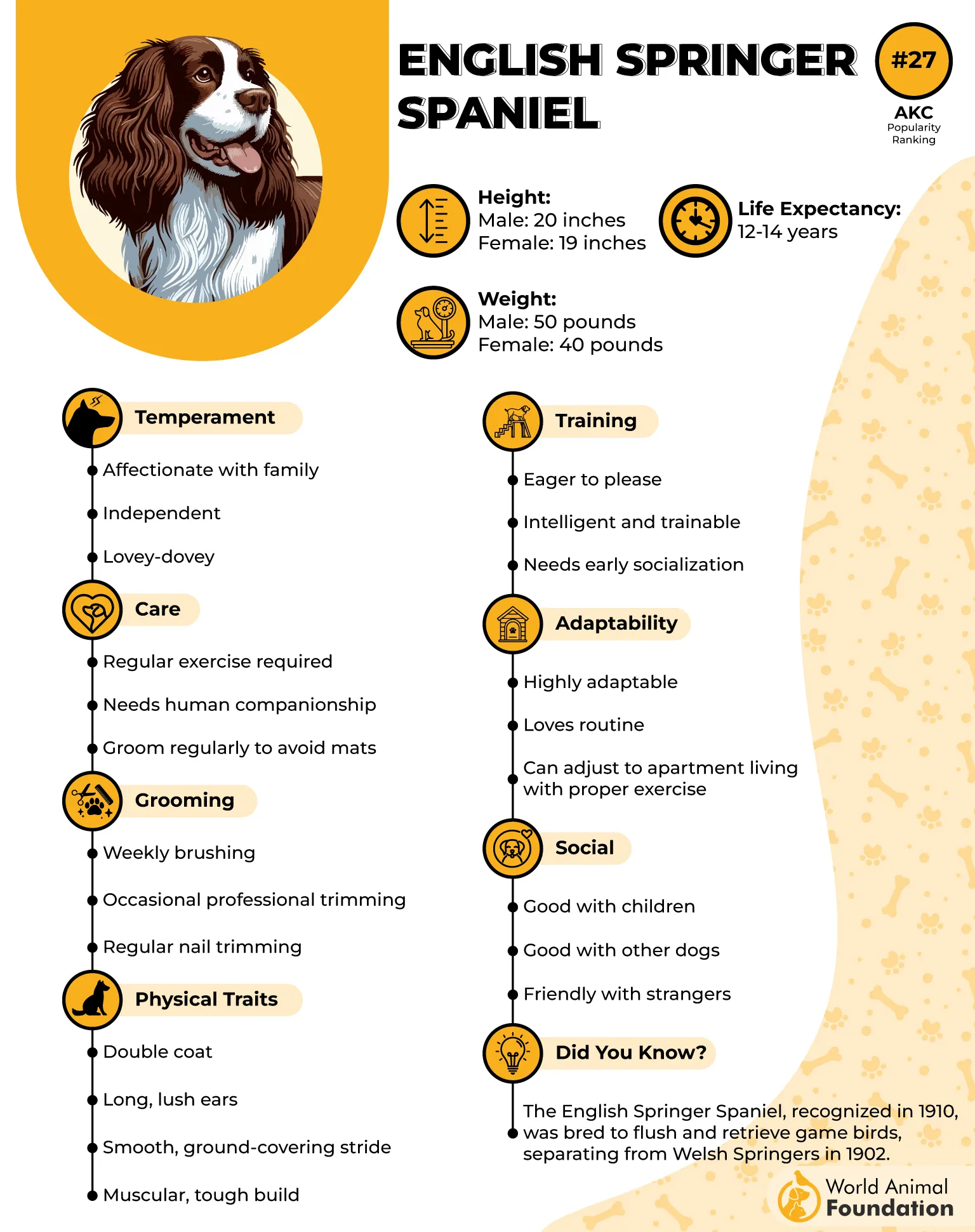
The breed’s high energy levels mean they need substantial physical exercise before training sessions to help them focus effectively. Once their exercise needs are met, English Springer Spaniels become incredibly attentive students who seem to absorb new information effortlessly.
8. Doberman Pinscher
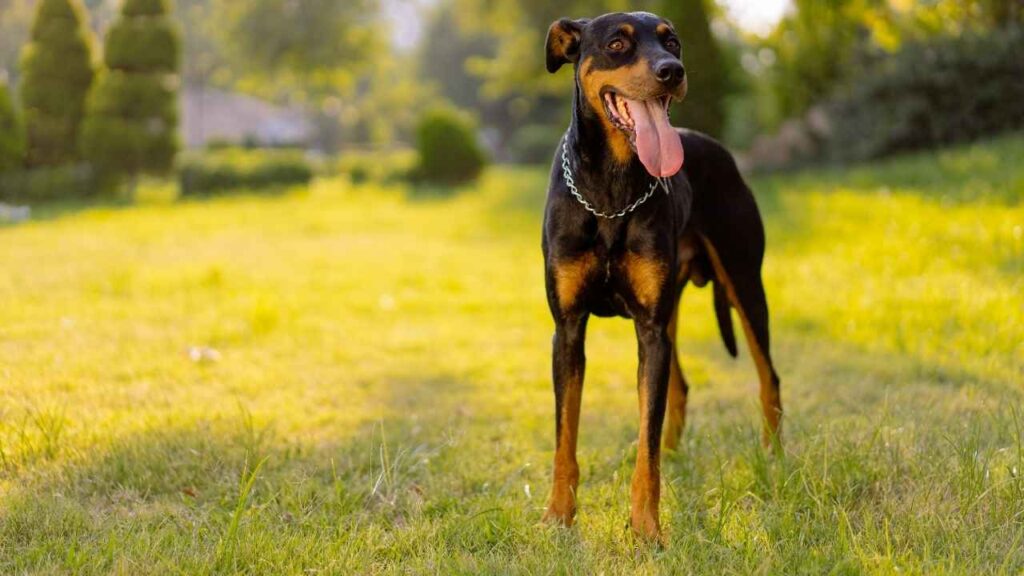
What makes Dobermans exceptional training partners is their intense desire to work closely with their families. They seem to understand that training strengthens their bond with their humans.
Their dog owners have the best partners and well-trained dogs that do each session with focus and determination. These dogs respond beautifully to consistent, fair training methods and can become discouraged by harsh corrections or inconsistent expectations.
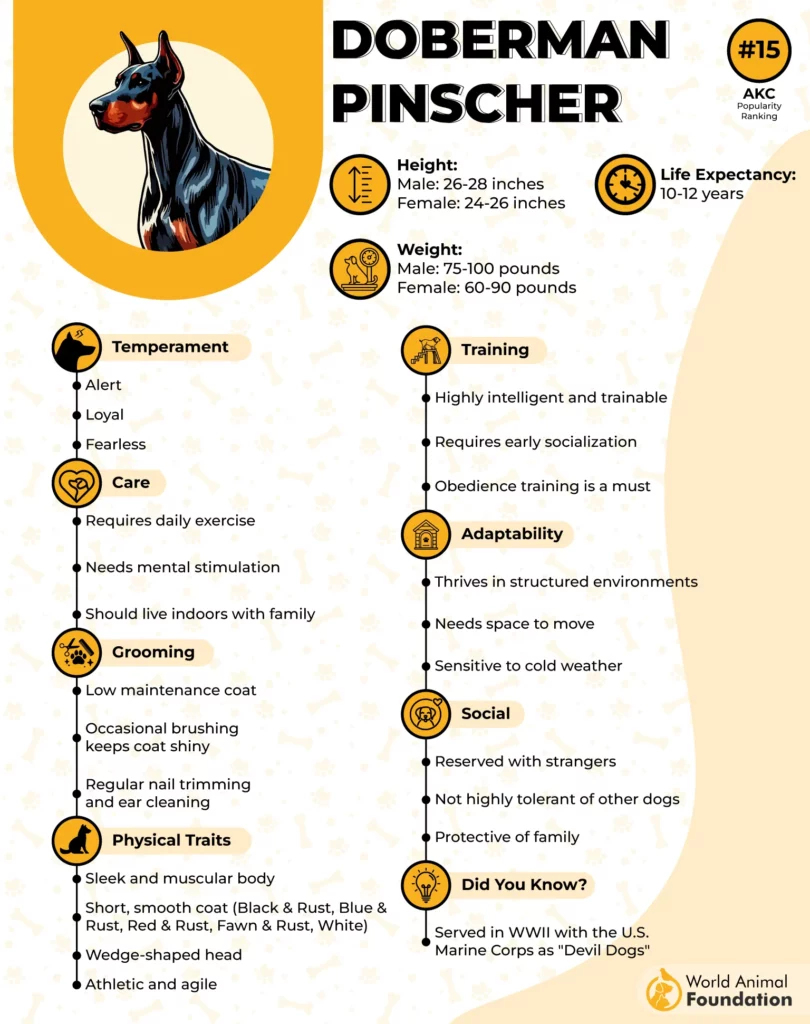
Their short coat requires minimal grooming, but they need substantial daily exercise to prevent restlessness and destructive behaviors. Dobermans are naturally protective of their families, making early socialization crucial for developing dogs that can distinguish between normal social situations and genuine threats.
9. Rottweiler
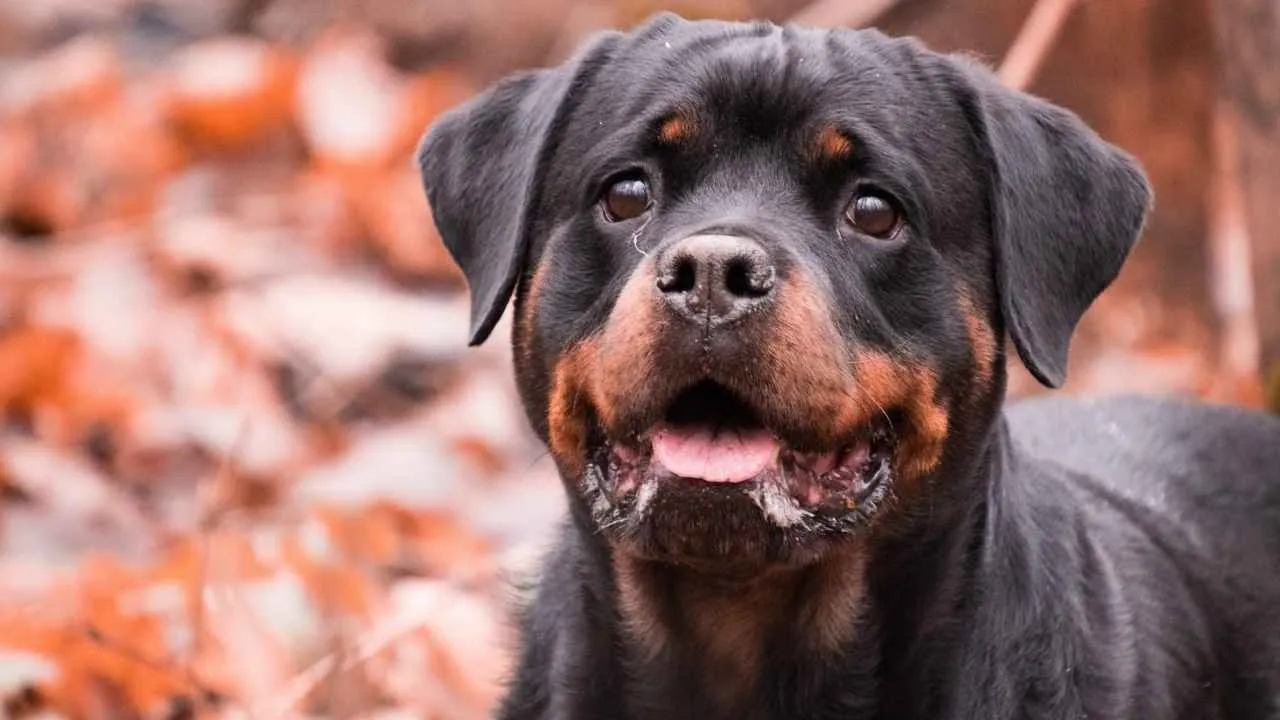
These powerful dogs, originally bred to drive cattle and guard Roman legions, bring centuries of working heritage to modern family life. Their imposing size and natural protectiveness require responsible ownership, and their gentle nature with their families makes them surprisingly adaptable companions.
What makes Rottweilers perfect in trick training is their incredible desire to please their families, combined with remarkable problem-solving abilities. They approach training with a serious focus on mental stimulation, and they also often master complex commands faster than their owners expect.
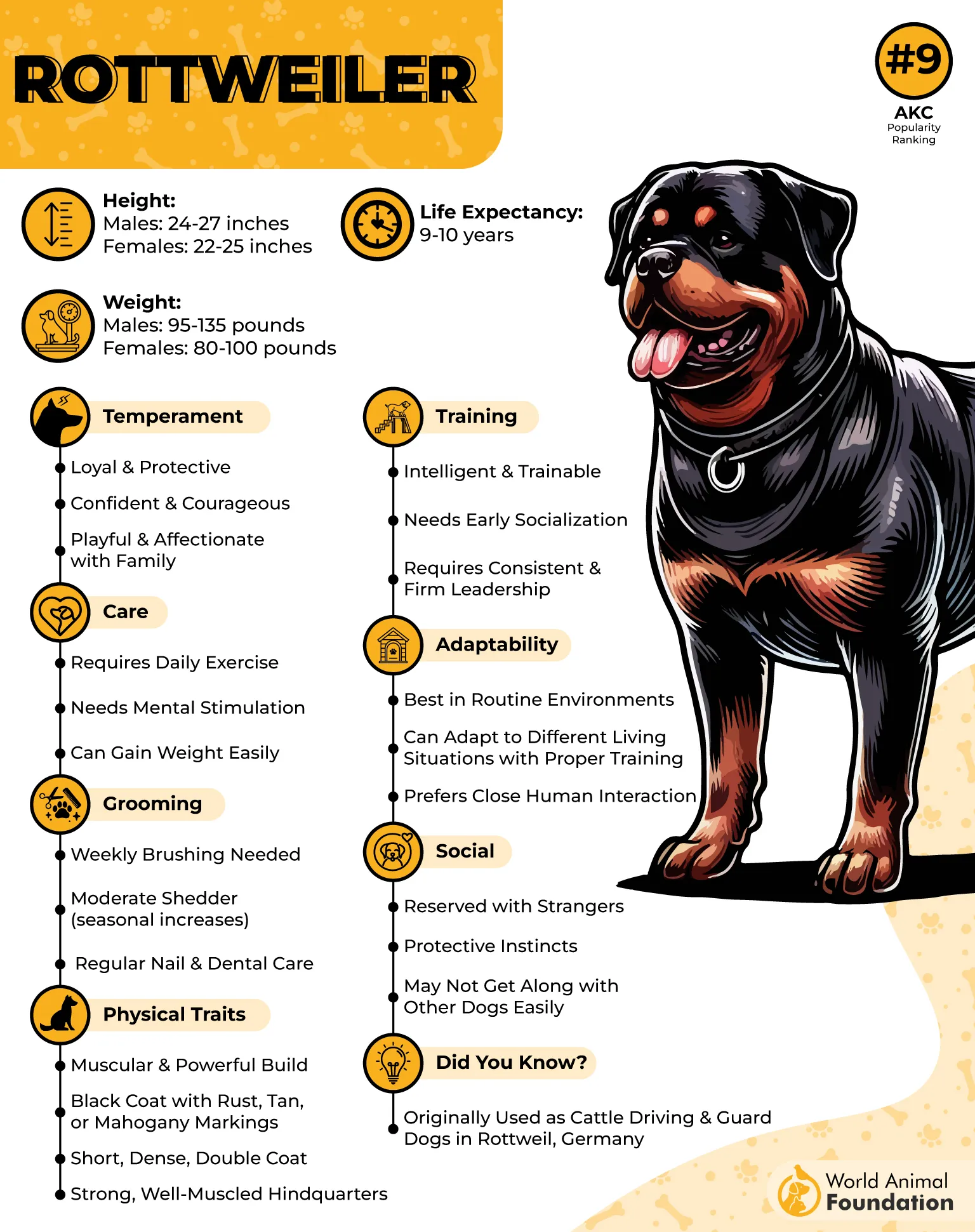
These dogs excel at tricks that utilize their natural strength and intelligence, including weight-pulling demonstrations, complex obedience training, and protective commands that showcase their guarding heritage.
10. German Shepherd
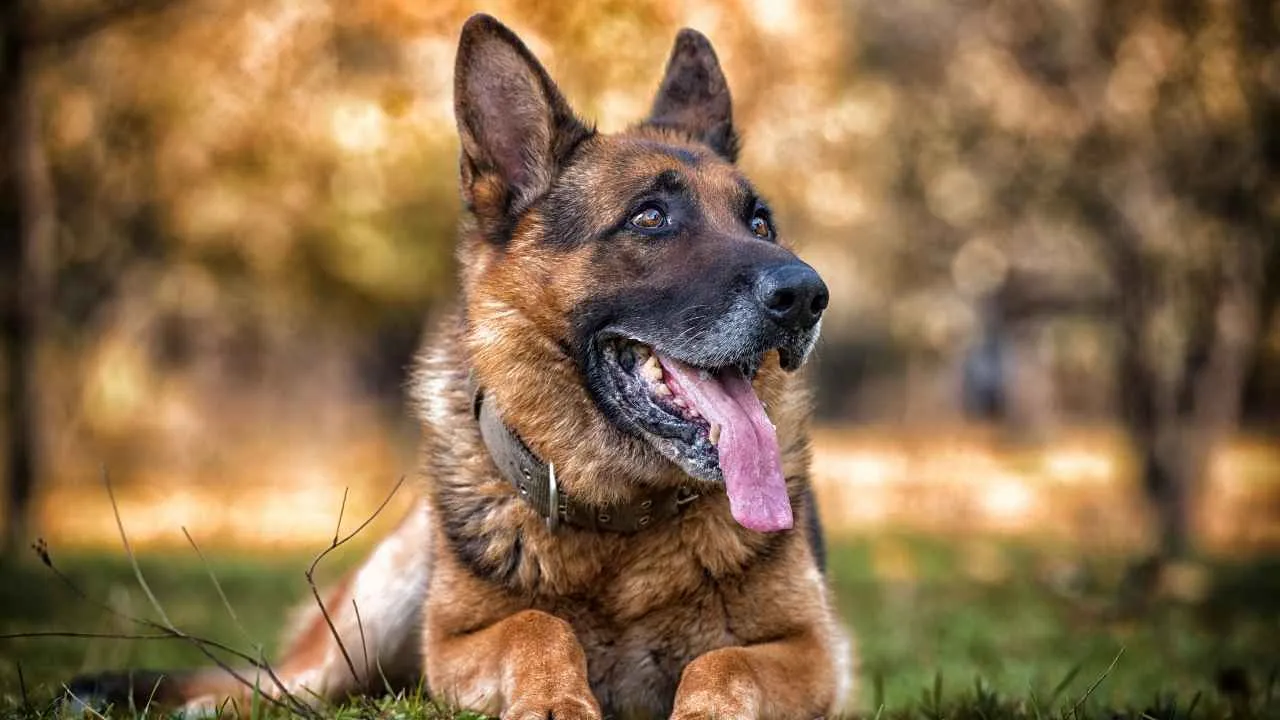
The pronunciation of their name might seem straightforward, but many people emphasize the wrong syllables. It’s JER-muhn SHEP-erd, not “German Shep-HERD.” These dogs have striking appearances with their erect ears, noble expressions, and confident posture that immediately attracts respect. Their double coat comes in various colors, but the classic black and tan pattern remains most recognizable.
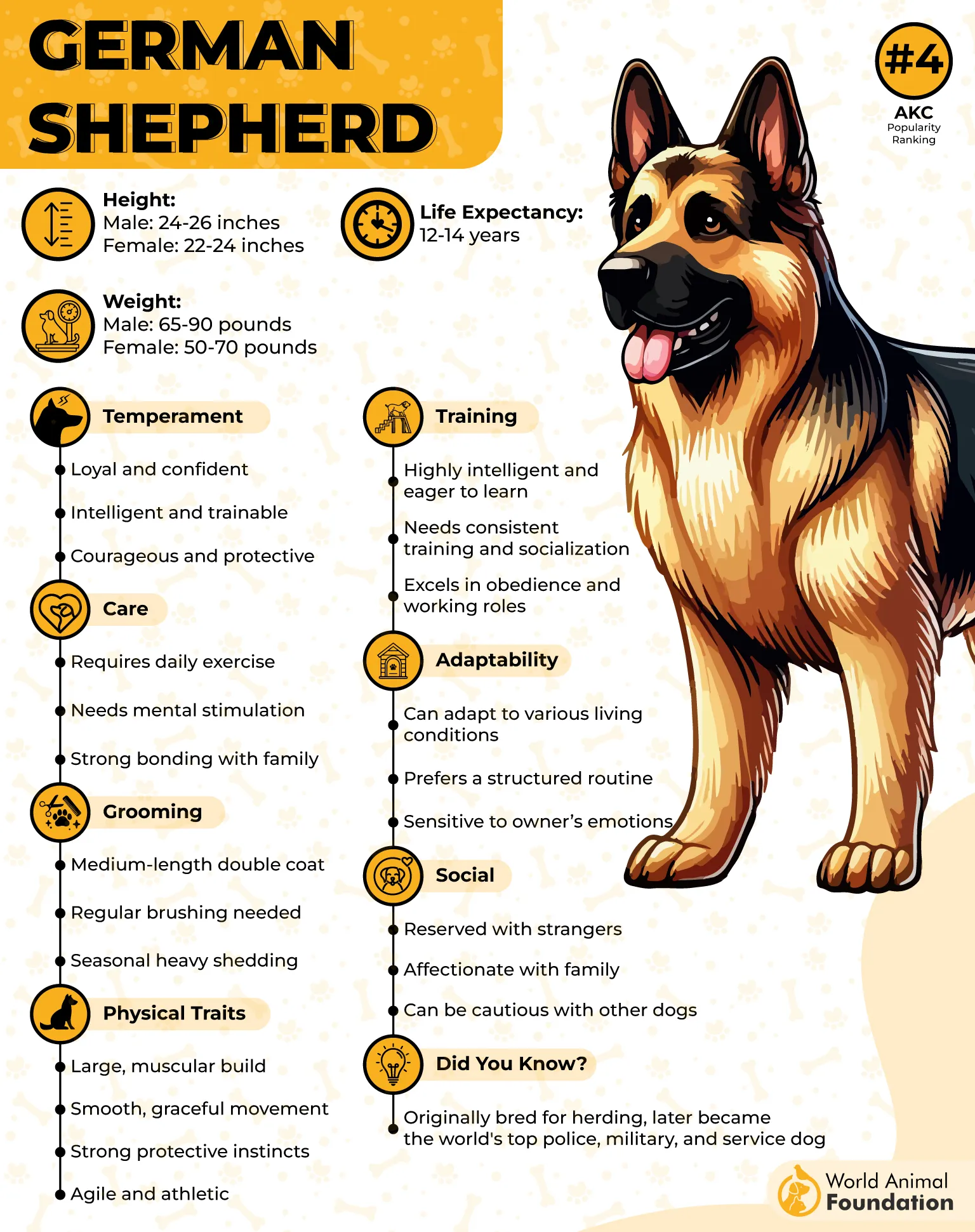
German Shepherds show exceptional body awareness and understand their size and strength in relation to their environment. They naturally moderate their energy around small children while maintaining alertness to potential dangers.
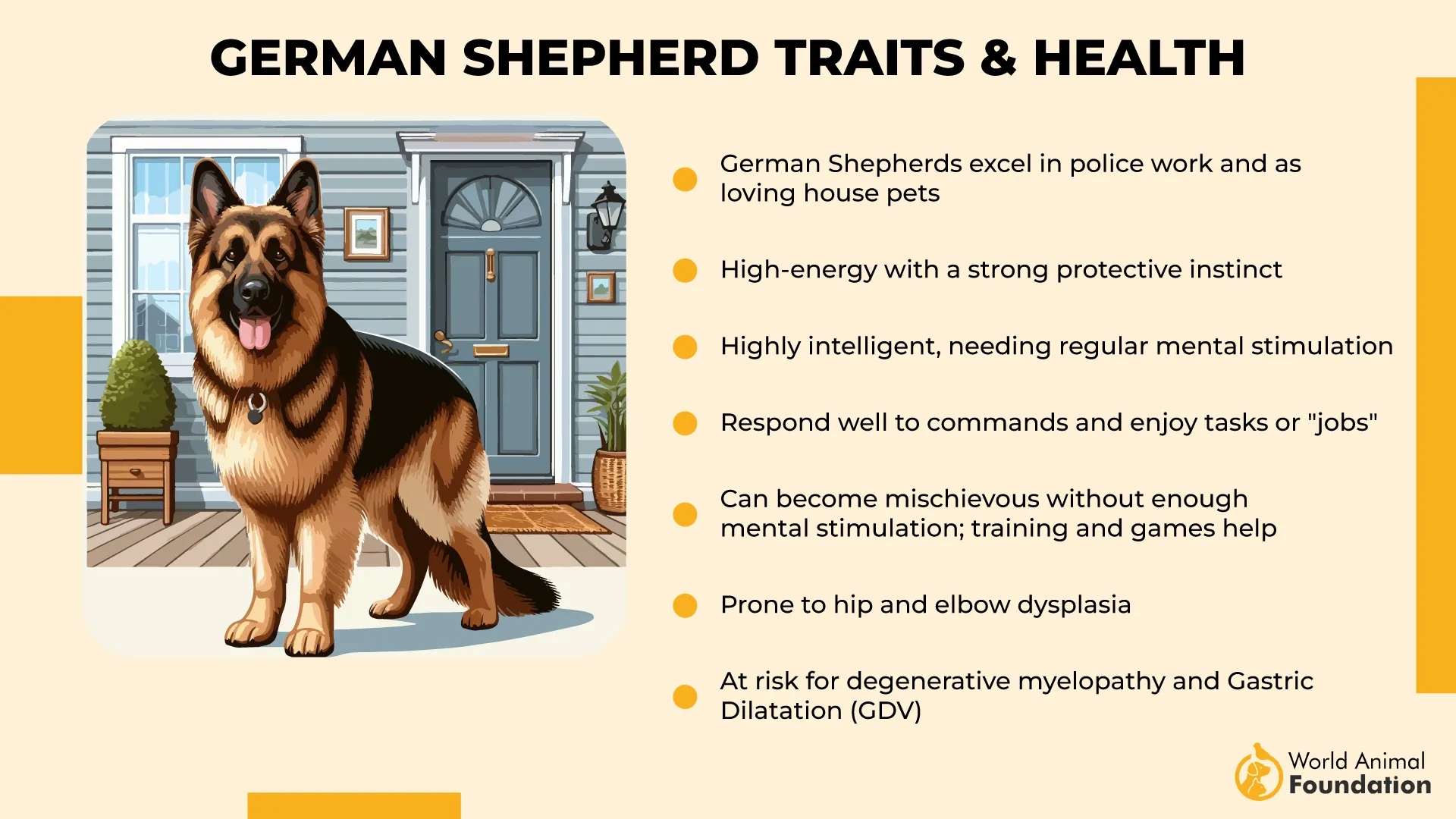
Their exercise requirements are substantial. They need at least two hours of physical activity daily, combined with mental challenges that engage their problem-solving abilities. These dogs excel in activities like tracking, agility, and protection work, where their intelligence and physical capabilities combine to create flawless performances.
Conclusion
Every dog has the potential to learn with patience, consistency, and love; some breeds are simply quicker due to their intelligence, eagerness to please, and natural agility. Breeds like Border Collies, Poodles, and German Shepherds stand out for their sharp minds and fast learning curves.
When you are with them in dog sports, they’ll prove that they are the most trainable dog breeds, and you will build a bond with them easily. With the right approach, even the slowest learners can become better at advanced tricks and complex commands.


